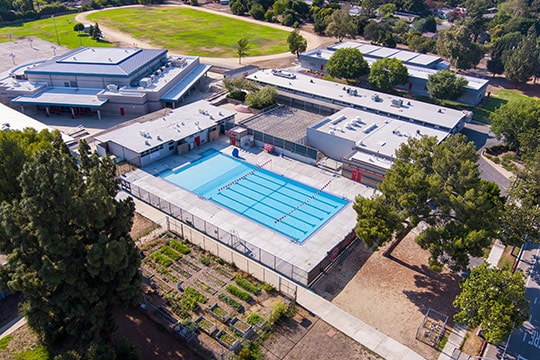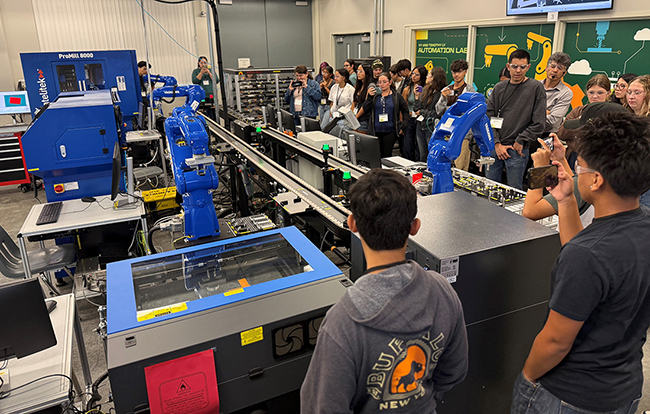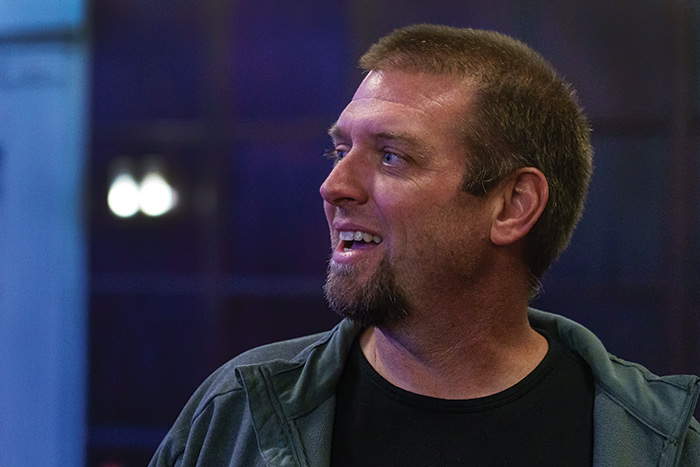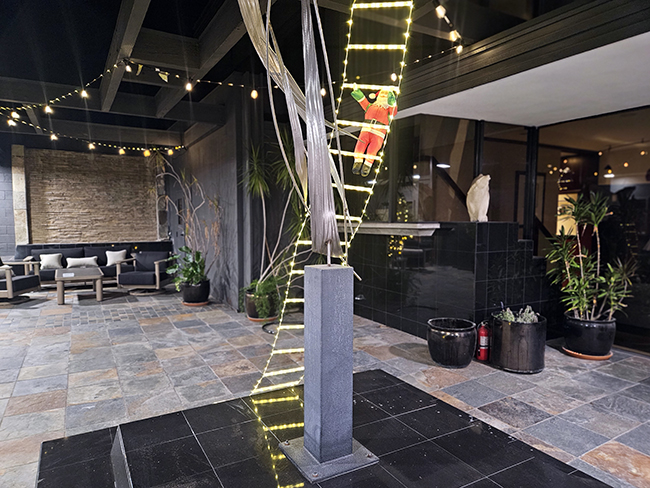Almanac Measure G: The impact is seen at every public school

by Mick Rhodes | mickrhodes@claremont-courier.com
Claremont Unified School District’s wide-ranging capital improvement projects are now complete, five years after voters approved the $58 million in general obligation bonds that funded them.
“We were able to get the majority of everything finished in a pretty good amount of time, about two-and-a-half years, even through the pandemic,” said CUSD’s Executive Director, Facilities and Project Management Rick Cota. “It was a pretty good accomplishment to complete these projects even with all those monkey wrenches in the way.”
Among the projects completed are:
- 52 new modular classrooms at Sumner Danbury, Chaparral, Mountain View, Sycamore, Oakmont, Vista and Condit elementary schools and El Roble Intermediate, for a price tag of $24,206,000.
- A new $11 million student center building at CHS, along with new kitchen facilities.
- New playgrounds at Sumner, Oakmont and Vista.
- Districtwide classroom modernization, including new floorings, ceilings, lighting, security and windows.
- Districtwide roof repair and replacement, except for Claremont High, which had its roof replaced prior to 2016.
- Swimming pool repairs and upgrades at CHS and El Roble.
- The main gymnasium at CHS was renovated with new floors, bleachers, air conditioning and restrooms.
- Districtwide electrical/water/data infrastructure improvements.
The completed work came in approximately $1 million over budget, at $59 million, with the overage covered by earned interest on deposits, said CUSD Assistant Superintendent of Business Services Lisa Shoemaker.
When work began in 2016, that list included modernization of the CHS music building and El Roble locker rooms. But those projects have been shelved for now, awaiting further funding for the estimated $1 million and $5 million needed, respectively, to complete them.
The CHS music building and El Roble locker room didn’t make the cut because other projects, such as the high school’s new student center and the 52 modular classrooms, ended up costing significantly more than the preliminary estimates prepared in 2015, said Ms. Shoemaker.
Those overruns were due primarily to the reality of getting architects’ and engineers’ hard analyses of the proposed projects once the bond funding was in place, which dictated increases in overall costs, Ms. Shoemaker said.
The sparkling new student center at CHS was originally planned to be a modular building.
“Obviously we didn’t do a modular building, because once they did the topographical studies and the structural engineer and the civil engineer came out, they said it doesn’t work here,” Ms. Shoemaker said. “We had to build a permanent structure, not a modular structure, and well, that basically doubles your cost. When we initially established the bond, we said, ‘Okay we have $58 million, these are the things we hope to do with it.’ And then as things changed, as we got solid pricing on things, we had to say, ‘Okay, how are we going to reallocate this?’”
In addition, CUSD made certain aesthetic choices with respect to the modular classrooms, which also bumped up that line item’s cost.
Overall prices also went up due to the well-publicized increases in the cost of lumber, and general scarcity of building materials over the past year and-a-half, and as a result of new code requirements that were not in place when the bond passed six years ago.
Oh, and there’s that whole global pandemic thing.
“The impact was, one, all the limits of how many people who could work at a time due to COVID,” Mr. Cota said. “We had supply issues where factories that produce steel, wood, the countertops, their factories may have shut down because of COVID. It was basically a scramble to find components to complete the projects, because again, something that may be produced in the state of Georgia, all of the sudden their factories shut down and they weren’t allowed to produce it.”
Labor force issues also played a role in slowing down the momentum of several projects that were in progress when the pandemic changed everything in March 2020.
“Let’s take for example our student center, where you might have 30 welders working at the same time normally, because that building has a lot of steel,” Mr. Cota said. “We had times when we were only able to have 10.”
Claremont High’s student center took about 10 months longer than planned to complete, Mr. Cota said. The locker room and pool projects at CHS and the pool at El Roble were all pushed back about six months.
“Really we were able to do a lot to have the delay only be that much,” Mr. Cota said.
Workplaces were also shut down a few times due to workers testing positive for COVID or being exposed to someone who had, adding further complexity.
“If someone caught COVID on the site we had to shut down the site until a two week period,” Mr. Cota said. “So we were dealing with that through the entire process.”
Also adding to delays were supply chain problems with building materials, including concrete, which has been a surprisingly rare commodity for much of the pandemic, Mr. Cota said.
“Everything’s like a symphony: one discipline’s done and another takes over,” Mr. Cota explained. “It’s all timed, so when one of them is delayed, that pushes back other people that were waiting to get started on their part of the pie.”
In the end though, most all of the items on CUSD’s wish list were checked. Now it’s on to the music building renovation/upgrade at CHS and the new locker room at El Roble, which are at the moment without a funding mechanism.
That may change soon though if the sale of the district’s La Puerta property, currently in escrow, goes through. It’s currently winding its way through the city’s approval process, amid outcry from some neighborhood residents.
It’s unclear when or if the property—which would provide a $13 million windfall for CUSD—might clear the hurdles necessary for the sale to go through.
If La Puerta sells, that money is already earmarked for CHS’s music room upgrade and El Roble’s new locker rooms, along with a Title IX mandated new varsity girls softball field at CHS, and various HVAC and other infrastructure upgrades districtwide, Ms. Shoemaker said.
For now, Mr. Cota and Ms. Shoemaker are proud of what the district has been able to complete, especially with the tail end of the project overlapping with some of the most trying times in modern history.
“It really doesn’t do it justice until you are physically there and see how beautiful these pools are, how modern and functional the locker rooms are, and of course the icing on the cake is that three story student center,” Mr. Cota said.
“It’s incredible what the kids are going to be able to enjoy. Certainly it’s very functional and almost gives you a sense of pride of what could happen at school sites. And really now anything down the road that we plan, we can look at these as examples of what can be done.”











0 Comments